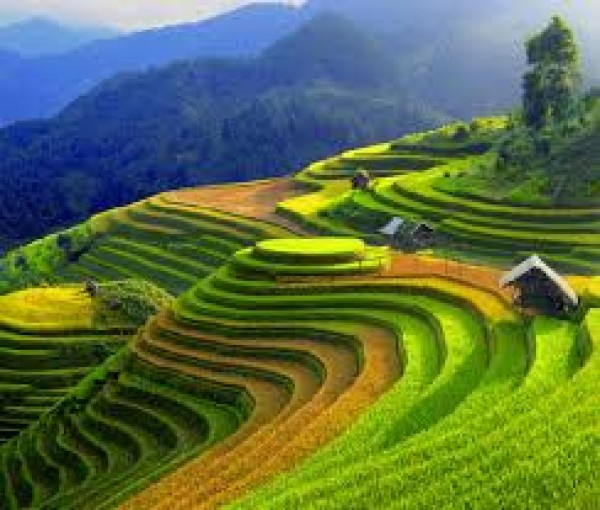The Temple honoring the Kings of Ly Dynasty
"The architecture of the Do Temple is marvelous,
Worthy to the thousand-year-old history of Thang Long"
The meaningful verses highly praised the architecture of Do Temple, which is in honor of the eight Kings of Ly Dynasty (1009–1225) in Vietnamese history.
Located in Dinh Bang Village in Tu Son District of Bac Ninh Province, 20 kilometers from Hanoi, Do Temple or Ly Bat De Temple plays an important role in the spiritual life of Vietnamese people.


According to Dai Viet Su Ky Toan Thu, a famous book about Vietnamese history written by many generations of Vietnamese historians in the feudal time, Do Temple was built in 1019 by the first king of the Ly Dynasty, Ly Cong Uan or Ly Thai To and was enlarged by his son Ly Thai Tong in 1030. The temple was used by Ly Thai To to meet the people to ask about their opinions on plans to safeguard the country.
The Temple was built on an elevated area of land of 31,250 square meters. It is surrounded by high walls and more than 20 architectural works and is divided to two parts: inner city and outer city. Access to the inner city is through the Ngu Long (five dragons) gate, which is skillfully carved, and then to Tien Te House, the shrine to worship the first king.
Hanging on the left side of the shrine is the royal proclamation of the moving of the capital city from Hoa Lu to Thang Long (Hanoi) of King Ly Cong Uan. The proclamation has 214 words corresponding to 214 years of rule by the eight Ly kings. The 180 square-meter Co Phap Dien shrine is the site of many relics including ancestral altars, the thrones and the statues of the eight kings and a shrine to worship the kings’ wives, among others.
In the outer city is a half–moon shaped lake with a floating pavilion and Van chi and Vo chi houses. The lake and the floating pavilion, on an area of 9,500 square meters, served as a place for the mandarins to watch water puppetry. An image of this architectural construction was printed on the banknotes of the Bank of Indochina. Van chi and Vo chi houses are places to worship the civil mandarins (van chi) and military mandarins (vo chi) who are greatly respected by the country.
In front of the Temple lies a semi-circular lake, with clear and full water all the year round. The lake is connected with two ponds at both ends of the village, with the Tieu Tuong River in front of the village. In the center of the lake stands a square house reserved for water puppetry performances with two beautiful tiered roofs. To the south of the lake,there is a huge pavilion to preserve stone slabs inscribed with the merits of the eight kings of Ly Dynasty, and to the north of the lake, a 5-compartment floating house for visitors to take a rest.
The Temple's gate includes five doors made of hard wooden plates assembled together and carved on top images of dragons waiting upon the moon. When the door opens, its two leaves are wide apart, and the two dragons on top of the doors seem to be soaring. On day, the dragons' eyes when catching the light shine like gemstones. Along the three-step staircase, are carved two stone dragons with clouds around, on a green stone floor, symbolizing the Thang Long (Soaring Dragon) Capital.
A traditional Do Temple Festival annually celebrated by the locals on the 15th, 16th and 17th day of the third lunar month to commemorate the coronation of Ly Cong Uan attracts thousands of pilgrims, who expressed the spirit of the Vietnamese, i.e. "when drinking the water, think of its source"...




